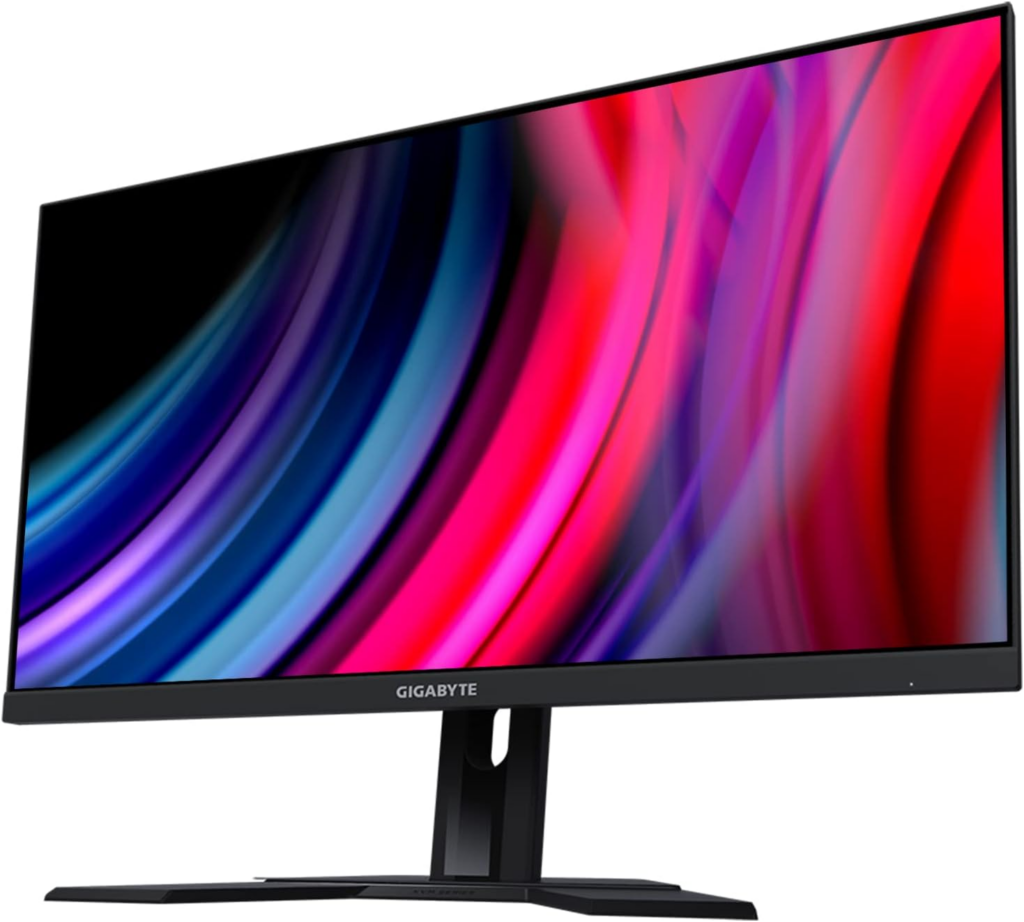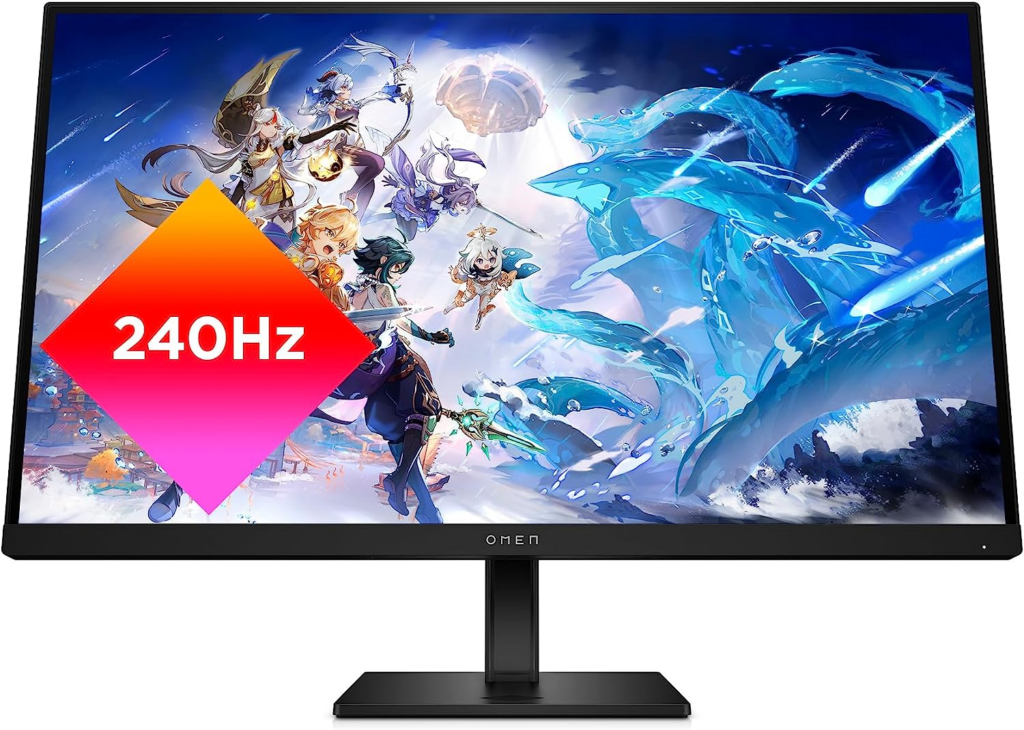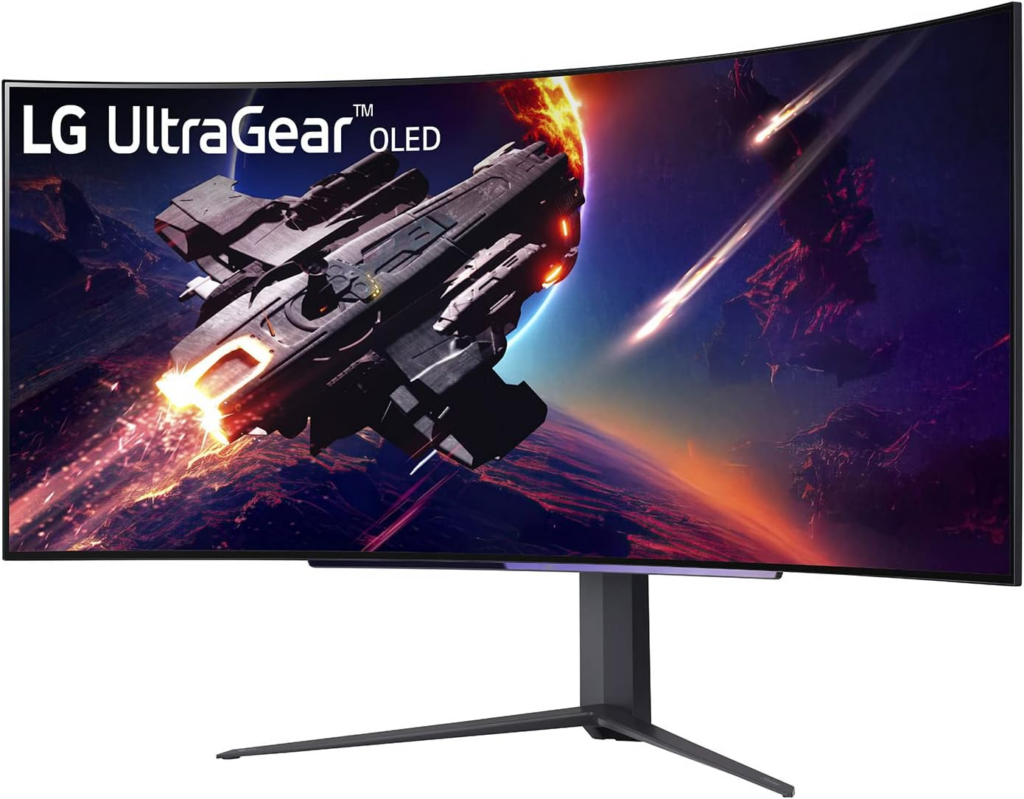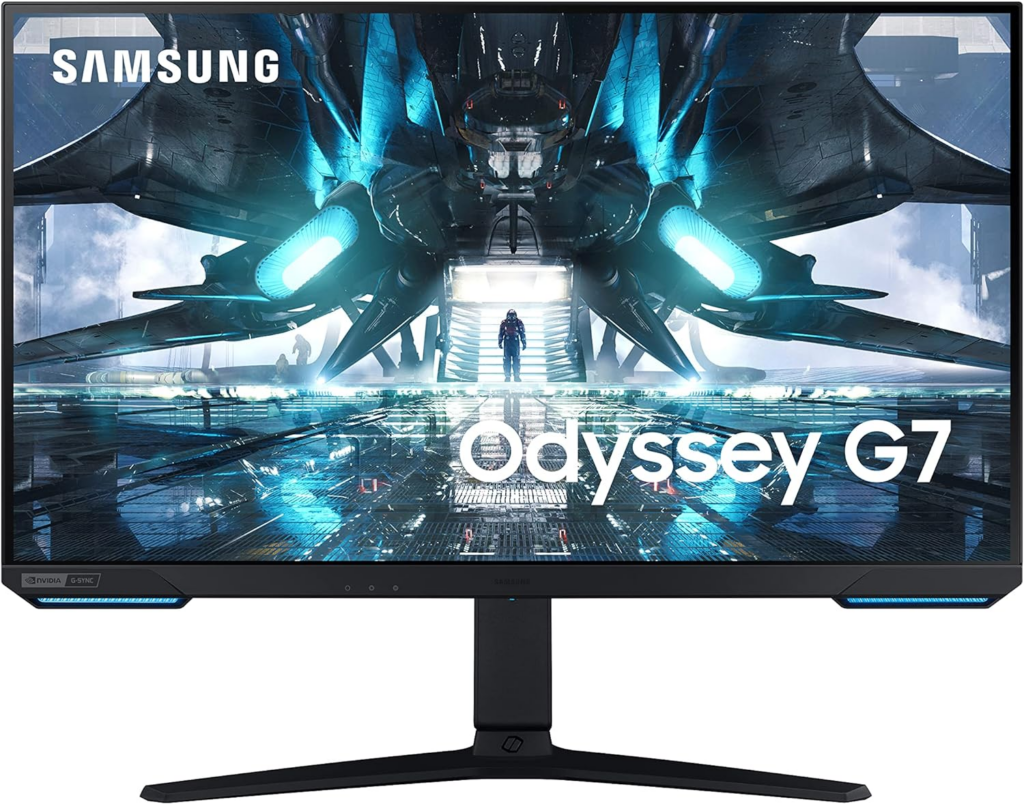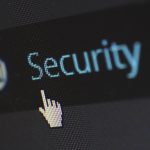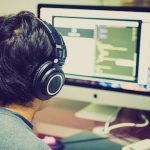Step up your game with the best 240Hz gaming monitors for unparalleled motion handling and reduced input latency. Elevate your competitive edge with cutting-edge display technology.
A high refresh rate monitor is advantageous for competitive gaming since it can provide better motion handling and reduced input latency than less-equipped competitors. This is because they update the image more often every second, as explained here. A popular refresh rate among gamers is 240Hz, and while displays with even higher refresh rates are possible, they are more expensive, and there is a range of best 240Hz gaming monitors available.
These monitors are available in a number of resolutions, ranging from 1080p to 4k, so there are several models to pick from. When shopping for a monitor, think about the sort of gaming setup you have. If you have a high-end graphics card capable of maintaining 240Hz at a high resolution, you may choose between a 1440p and a 4k display. However, if you are on a tight budget, a low-cost 1080p display is preferable. If you want the optimal performance, you should also consider the monitor’s reaction speed and input latency.
ASUS ROG Swift OLED PG27AQDM
The ASUS ROG Swift OLED PG27AQDM is the finest 240Hz gaming display we’ve tested. It’s a superb gaming monitor that combines outstanding motion handling with excellent picture quality, giving you the best of both worlds in terms of performance and image quality. The biggest advantage of this monitor is its OLED display, which offers a near-instantaneous reaction and nearly no motion blur with fast-moving objects, making gaming seem smooth and fluid. It also supports FreeSync variable refresh rate (VRR) and G-SYNC to eliminate screen tearing with AMD and NVIDIA graphics cards.
Apart from its gaming capabilities, it’s a good pick for gaming in dark rooms because it shows deep and inky blacks without blooming and becomes bright enough in HDR to make highlights pop. However, it has certain oddities, such as the necessity to upgrade the firmware to achieve the optimum HDR performance and the lowest input latency possible. If you want something more dependable straight out of the box, try the LG 27GR95QE-B, but it doesn’t get as bright, so the ASUS still wins.
Samsung Odyssey Neo G8 S32BG85
If you prefer a higher-resolution display for clear and detailed visuals, try the Samsung Odyssey Neo G8 S32BG85 instead of a 1440p monitor like the ASUS ROG Swift OLED PG27AQDM. It differs from the ASUS in that it lacks an OLED panel, which means it doesn’t have the same deep blacks, but more crucially, it lacks the same near-instantaneous reaction time for premium motion handling. Fortunately, the reaction speed remains superb, and there isn’t any motion blur.
Its biggest advantage over the ASUS is that you can use it to connect a game console or take full use of HDMI 2.1 graphics cards owing to its HDMI 2.1 bandwidth, which the ASUS does not offer. Unfortunately, 240Hz transmissions have several picture quality concerns, such as scanlines and pixel inversion. This, however, has no effect on its gameplay performance and is difficult to detect unless you hunt for it in certain material. Apart from those little flaws, it nevertheless provides good image quality, with a decent local dimming option and strong highlights that stand out against the rest of the image.
Dell Alienware AW2723DF
If you don’t require a 4k display and want the best 1440p 240Hz monitor in the mid-range pricing range, consider the Dell Alienware AW2723DF. If you don’t have a high-end graphics card or don’t require the highest visual quality, the lower resolution of the Samsung Odyssey Neo G8 S32BG85 is advantageous. Although it has the same resolution and native refresh rate as the ASUS ROG Swift OLED PG27AQDM, it lacks an OLED display for near-instantaneous reaction time and excellent black levels. On the plus side, you can overclock its 240Hz natural refresh rate to 280Hz, which, although not considerably higher than comparable 240Hz displays, nonetheless contributes to a pleasant gaming experience.
It’s an outstanding gaming monitor with superb motion handling due to its rapid response time at any refresh rate and lack of noticeable overshoot. It also offers G-SYNC compatibility and FreeSync support over DisplayPort connections. It even has a few gaming features that enhance your entire experience, such as distinct crosshair and vision settings that make it easier to see opponents and give you a competitive advantage.
Gigabyte M27Q X
If the Dell Alienware AW2723DF is still out of your price range, a cheaper mid-range solution like the Gigabyte M27Q X is available. Although it has many of the same specifications as the Dell, there is a tiny drop in performance in a few areas, which is the price you pay for obtaining something cheaper. It lacks an overclock option, hence its maximum refresh rate is 240Hz, and it has poorer motion handling, especially at lower refresh rates. Nonetheless, it has a fast enough reaction time at any refresh rate to deliver an outstanding gaming experience.
It also has backlight strobing, which operates across a wide refresh rate range to assist eliminate persistent blur. It even works in tandem with VRR, which is something that most monitors cannot achieve. It supports FreeSync and G-SYNC, eliminating screen tearing with almost any sort of source. Aside from that, it provides essential tools for connecting additional devices, such as a KVM switch that allows you to easily switch between multiple sources.
HP Omen 27qs
If you just have a restricted budget for a monitor, the HP Omen 27qs should be on your shortlist. Despite its low price, it has a 1440p resolution and a refresh rate of 240Hz. The remarkably reduced input latency and fluid animation make games seem responsive. AMD FreeSync and NVIDIA G-Sync VRR technologies are also supported.
Among other gaming-related innovations, the Omen 27qs can display a simulated crosshair and the current frame rate. There are two HDMI 2.0 ports, one DP 1.4 port, and two USB 3.2 Gen 1 connectors as well.
The image quality is good, and the IPS panel provides true colors and broad viewing angles. The 27qs are also bright enough in both SDR and HDR modes. While it offers a reasonable HDR brightness, it lacks a solid HDR experience due to its weak contrast ratio, which is the result of its mediocre local dimming implementation. You can’t even turn it off if you want to. But all of this is simply part of the process of purchasing a budget monitor. Furthermore, while the provided stand is quite ergonomic, it lacks swivel adjustment.
LG 45GR95QE-B
There aren’t many ultrawide displays with 240Hz refresh rates, but despite the scarcity, the LG 45GR95QE-B is a superb alternative. It’s a 45-inch curved OLED monitor with a resolution of 3440 x 1440p.
The monitor can generate inky blacks and has a near-infinite contrast ratio, resulting in vivid and brilliant colors, thanks to its OLED display. The overall image quality is excellent. Another advantage of using an OLED screen is that it has a fast reaction time, so you won’t notice any motion artifacts.
The 45GR95QE-B, like our previous choices, offers a reduced input lag, resulting in a responsive gaming experience. You also get AMD FreeSync and NVIDIA G-Sync VRR support.
The monitor has a nice design and outstanding build quality. In addition, there are two HDMI 2.1 connectors, one DP 1.4 port, two USB 3.2 Gen 1 ports, and a 3.5mm audio out. You may also use the monitor to see the virtual crosshair and FPS counter.
Beyond gaming, the LG product is ideal for anything from office work to watching movies or TV shows.
Corsair Xeneon 27QHD240
While our top overall recommendation, the Dell Alienware AW2327DF, is a fantastic 240Hz panel, the Corsair Xeneon 27QHD240 is a good option if you want an OLED screen. It’s a 27-inch 1440p display that excels in practically every category, but gaming is unquestionably its strongest strength.
It boasts inky blacks, broad viewing angles, and an outstanding reaction speed, as is usual with OLED monitors. At higher refresh rates, it also has a reduced input latency, however at lower frame rates, the lag grows. While competitive gamers may experience latency, the lag is acceptable for most individuals.
There includes support for both major VRR technologies to eliminate screen tearing, as well as low framerate adaptation to provide a nice experience even when the refresh rate goes below 20Hz.
Furthermore, two HDMI 2.1 ports, one DP 1.4 port, four USB Type-A connections, and two USB-C ports are included. All USB ports offer USB 3.2 Gen 1 speeds, but the Type-C connectors can also charge your laptop, tablet, or phone with 65W USB Power Delivery. Another advantage of the display is its built-in KVM switch.
Unfortunately, like other OLED displays, the Xeneon 27QHD240 is subject to burn-in. However, you will be relieved to hear that the business provides a three-year guarantee for any burn-in as long as you employ the monitor’s built-in orbit and image retention refresh settings.
Samsung Odyssey Neo G7
With its 4K resolution, 32-inch display size, and 240Hz refresh rate, the Samsung Odyssey Neo G8 is ideal if you have a high-end gaming PC and want to get the most out of it. It’s also curved with a 1000R radius, creating an immersive environment.
The monitor has a wonderful contrast ratio and high peak brightness since it features a VA-type LCD panel with Mini-LED backlighting and full-array local dimming. Another advantage of the Samsung offering is the extremely minimal input latency, which allows for a snappy experience. You will also have a quick response time.
There are two HDMI 2.1 connectors, one DisplayPort 1.4 port, and two USB Type-A ports rated at USB 3.2 Gen 1 speeds. Moreover, despite its curved design and bigger size, the Neo G8 offers superb ergonomics. It allows you to modify anything from the height to the swivel.
In addition, the Samsung offering is excellent for watching movies, doing work, and pretty much everything else.
Although there are many things to enjoy about the Odyssey Neo G8, it is not without flaws. At low frame rates, you may see flickering. Furthermore, only the most powerful PCs will be able to fully utilize this display.
FAQ
Is a 240Hz monitor worth it?
A 240Hz monitor may be worthwhile if your gaming PC can deliver 240fps in your favorite games. Gaming will feel more fluid, and ordinary computer usage will feel more fluid. It’s also a good idea if you intend to maintain your monitor for an extended period of time. Furthermore, it’s a no-brainer for competitive gamers. However, if you have a mid-range PC or play games on which even the most powerful PC cannot achieve 240fps, a 120Hz or 144Hz display is preferable.
Can the human eye perceive 240Hz?
A refresh rate of 240Hz may be perceived by the human eye. While perception differs from person to person, one research found that under the correct conditions, individuals can see up to 500Hz refresh rate. Frequent exposure to content with a high refresh rate improves a person’s capacity to detect greater refresh rates. As a result, gamers are frequently the most sensitive to 240Hz and greater refresh rates.
How can I tell if my GPU can run games at 240Hz?
The capacity of a GPU to run games is determined by a variety of factors, including the graphic complexity of the game and the display resolution. As a result, there is no simple way to assess whether your GPU can run games at 240Hz. As a result, it’s a good idea to look at media and user evaluations to see if your GPU can run your favorite games at the resolution you want.
Will a 240Hz monitor increase FPS?
A monitor can only display frames created by the GPU in your computer. As a result, it cannot boost the FPS count on its own. However, if your GPU can output 240 frames per second, you will see all of them on your 240Hz monitor.





